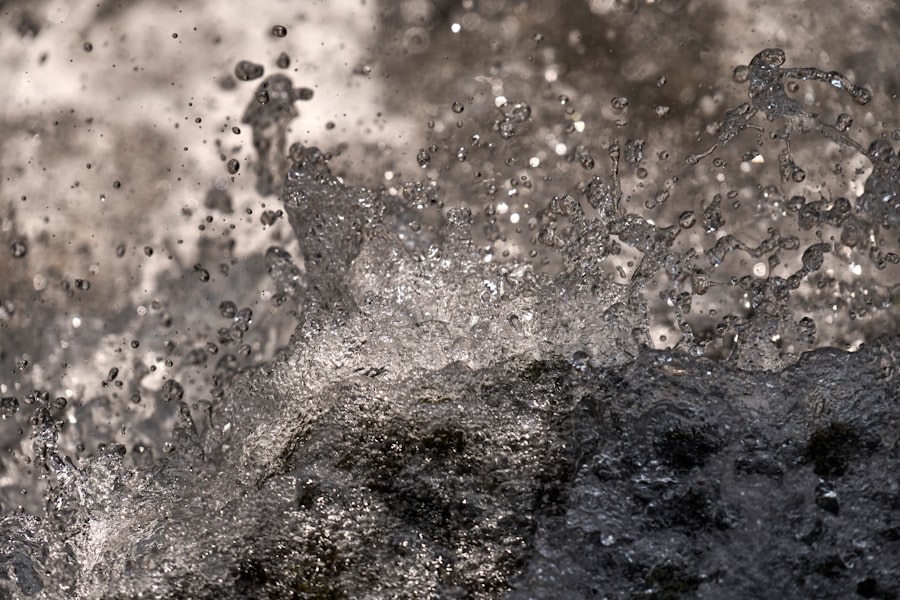Smart dust refers to tiny, wireless microelectromechanical systems (MEMS) that can sense, communicate, and compute. These minuscule devices, often no larger than a grain of sand, are equipped with sensors that can detect various environmental parameters such as temperature, humidity, light, and even chemical compositions. The concept of smart dust was first introduced in the late 1990s by researchers at the University of California, Berkeley, who envisioned a network of these tiny sensors that could be deployed in vast numbers to monitor physical environments in real-time.
The potential applications of smart dust span numerous fields, including environmental monitoring, healthcare, military operations, and smart cities. The architecture of smart dust typically consists of three main components: sensors for data collection, a communication system for transmitting data, and a power source. These devices can operate autonomously and are designed to work collaboratively in a network, forming a distributed sensing system.
The ability to gather and relay information from hard-to-reach or hazardous locations makes smart dust an attractive solution for various monitoring tasks. As technology advances, the miniaturization of components continues to enhance the capabilities of smart dust, making it an increasingly viable option for real-time environmental monitoring.
Key Takeaways
- Smart Dust is a network of tiny wireless sensors that can monitor environmental conditions in real-time.
- Real-time environmental monitoring is crucial for early detection of pollution, natural disasters, and climate change impacts.
- Smart Dust works by using sensors to collect data on environmental factors such as air quality, temperature, and humidity.
- Advantages of using Smart Dust for environmental monitoring include cost-effectiveness, scalability, and the ability to cover large areas.
- Applications of Smart Dust in real-time environmental monitoring include disaster response, agriculture, and urban planning.
The Importance of Real-Time Environmental Monitoring
Real-time environmental monitoring is crucial for understanding and managing the complex interactions within ecosystems. It provides immediate data that can inform decision-making processes in various sectors, including agriculture, urban planning, disaster management, and public health. For instance, in agriculture, real-time data on soil moisture levels can help farmers optimize irrigation practices, leading to more efficient water use and improved crop yields.
Similarly, urban planners can utilize real-time air quality data to implement measures that reduce pollution and enhance public health. Moreover, real-time monitoring plays a vital role in disaster response and management. In the event of natural disasters such as floods or wildfires, timely information about environmental conditions can significantly improve response strategies.
For example, sensors that monitor water levels in rivers can provide early warnings about potential flooding, allowing communities to take preventive measures. The integration of real-time data into decision-making processes not only enhances situational awareness but also fosters proactive approaches to environmental challenges.
How Smart Dust Works in Environmental Monitoring

Smart dust operates through a network of tiny sensors that collect data from their surroundings. Each sensor is capable of measuring specific environmental parameters and transmitting this information wirelessly to a central processing unit or cloud-based platform. The communication between these sensors is typically facilitated through low-power wireless protocols such as Zigbee or LoRaWAN, which allow for long-range transmission with minimal energy consumption.
This is particularly important given the limited power supply available to such small devices. Once the data is collected and transmitted, it undergoes processing and analysis to extract meaningful insights. Advanced algorithms can be employed to interpret the data in real-time, enabling immediate responses to changing environmental conditions.
For instance, if a smart dust sensor detects a spike in air pollution levels, it can trigger alerts to local authorities or activate mitigation measures such as traffic control or public health advisories. The ability to process and analyze data on-the-fly is one of the key advantages of using smart dust for environmental monitoring.
Advantages of Using Smart Dust for Environmental Monitoring
One of the primary advantages of smart dust is its scalability. Due to their small size and low cost, thousands or even millions of these sensors can be deployed across vast areas to create dense networks for comprehensive monitoring. This scalability allows for more granular data collection compared to traditional monitoring methods that often rely on fewer, larger sensors.
As a result, smart dust can provide a more detailed picture of environmental conditions, leading to better-informed decisions. Another significant benefit is the ability to operate in challenging or hazardous environments where traditional monitoring equipment may be impractical or unsafe. For example, smart dust can be deployed in remote wilderness areas to monitor wildlife habitats without disturbing the ecosystem.
Similarly, in industrial settings where hazardous materials are present, smart dust can provide critical data on air quality or chemical leaks without putting human operators at risk. This versatility makes smart dust an invaluable tool for environmental monitoring across diverse contexts.
Applications of Smart Dust in Real-Time Environmental Monitoring
Smart dust has a wide range of applications in real-time environmental monitoring across various sectors. In agriculture, for instance, farmers can utilize smart dust sensors to monitor soil conditions and crop health continuously. By analyzing data on moisture levels, nutrient content, and temperature fluctuations, farmers can make informed decisions about irrigation schedules and fertilizer application, ultimately enhancing productivity while minimizing resource waste.
In urban environments, smart dust can be employed to monitor air quality and noise pollution levels. By deploying a network of sensors throughout a city, local governments can gain insights into pollution hotspots and identify trends over time. This information can inform policy decisions aimed at improving public health and reducing environmental impacts.
Additionally, smart dust can be used in disaster management scenarios; for example, during wildfires, sensors can track temperature changes and smoke levels in real-time, providing critical information for firefighting efforts and evacuation planning.
Challenges and Limitations of Smart Dust in Environmental Monitoring

Despite its numerous advantages, the deployment of smart dust for environmental monitoring is not without challenges. One significant limitation is the issue of power supply. While advancements in energy harvesting technologies have made it possible for some smart dust devices to operate without batteries by harnessing ambient energy sources like solar power or vibrations, many still rely on limited battery life.
This constraint necessitates careful planning regarding sensor placement and maintenance schedules to ensure continuous operation.
The sheer volume of data generated by a dense network of smart dust sensors can be overwhelming.
Efficiently processing this data requires robust algorithms and significant computational resources. Additionally, ensuring data accuracy and reliability is paramount; sensor drift or malfunction can lead to erroneous readings that may misinform decision-making processes. Addressing these challenges requires ongoing research and development efforts to enhance the reliability and efficiency of smart dust systems.
Future Developments in Smart Dust Technology for Environmental Monitoring
The future of smart dust technology holds great promise for enhancing environmental monitoring capabilities. One area of development is the integration of artificial intelligence (AI) and machine learning algorithms into smart dust systems. By leveraging AI, these systems can improve their ability to analyze complex datasets and identify patterns that may not be immediately apparent through traditional analysis methods.
This could lead to more accurate predictions regarding environmental changes and better-informed responses. Additionally, advancements in materials science may lead to the creation of even smaller and more efficient sensors with enhanced capabilities.
Furthermore, improvements in communication technologies could facilitate faster data transmission rates and more reliable connectivity among sensor networks. As these developments unfold, the potential applications of smart dust in environmental monitoring will continue to expand.
Ethical and Privacy Considerations in the Use of Smart Dust for Environmental Monitoring
The deployment of smart dust raises important ethical and privacy considerations that must be addressed as technology advances. One primary concern is the potential for surveillance capabilities inherent in these tiny sensors. While their primary purpose may be environmental monitoring, the ability to collect data from various locations raises questions about individual privacy rights.
For instance, if smart dust sensors are deployed in urban areas without proper oversight or regulation, they could inadvertently capture personal information about individuals’ movements or behaviors. Moreover, there is the issue of data ownership and consent. Who owns the data collected by smart dust sensors?
Should individuals have a say in whether their environment is monitored? These questions highlight the need for clear policies and regulations governing the use of smart dust technology. Establishing ethical guidelines will be essential to ensure that the benefits of real-time environmental monitoring do not come at the expense of individual privacy rights or societal trust.
As smart dust technology continues to evolve and find its place within various sectors, addressing these ethical considerations will be crucial for fostering public acceptance and ensuring responsible use. Engaging stakeholders—including policymakers, technologists, and community members—in discussions about the implications of smart dust will help create a framework that balances innovation with ethical responsibility.
In the rapidly evolving field of environmental monitoring, smart dust technology is playing a pivotal role by providing real-time data collection and analysis capabilities. This innovative approach is transforming how we understand and interact with our environment, offering unprecedented insights into various ecological and atmospheric conditions. For those interested in exploring more groundbreaking technologies that are shaping our world, you might find the article on The Best Tech Products 2023 particularly enlightening. It highlights some of the most cutting-edge advancements in technology, including those that complement and enhance the capabilities of smart dust in environmental applications.
FAQs
What is Smart Dust?
Smart Dust refers to tiny wireless sensors that are capable of monitoring environmental conditions such as temperature, humidity, and air quality. These sensors are typically the size of a grain of sand and can be dispersed in the environment for real-time monitoring.
How does Smart Dust work in real-time environmental monitoring?
Smart Dust sensors are equipped with various environmental monitoring capabilities and are designed to communicate with each other wirelessly. They can be dispersed in the environment and collect data on various environmental parameters, which can then be transmitted in real-time to a central monitoring system for analysis.
What are the benefits of using Smart Dust for environmental monitoring?
Smart Dust offers several benefits for real-time environmental monitoring, including the ability to collect data from hard-to-reach or hazardous environments, the capability to provide real-time data for better decision-making, and the potential for cost-effective and scalable monitoring solutions.
What are some potential applications of Smart Dust in environmental monitoring?
Smart Dust can be used in a variety of environmental monitoring applications, including air quality monitoring in urban areas, tracking environmental changes in remote or inaccessible locations, monitoring water quality in rivers and lakes, and detecting environmental hazards in industrial settings.
What are the challenges associated with the use of Smart Dust for environmental monitoring?
Challenges associated with Smart Dust for environmental monitoring include the need for reliable and long-lasting power sources for the sensors, the potential for data overload from a large number of sensors, and the need for robust data analysis and interpretation methods. Additionally, there may be concerns about the privacy and security of the data collected by Smart Dust sensors.

